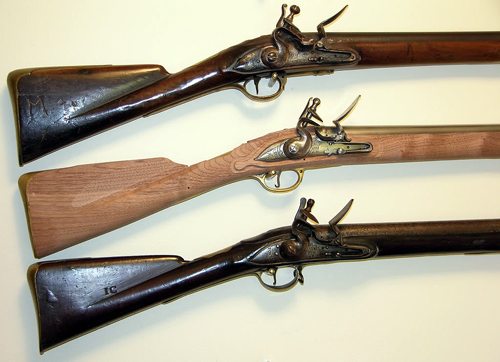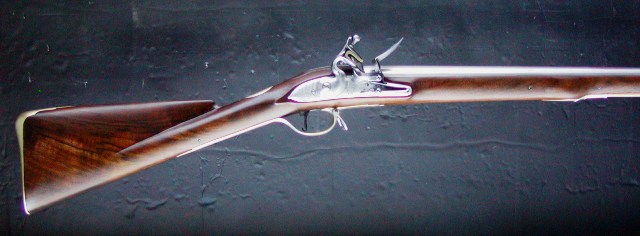This makes a lot of sense to me. I could be entirely mistaken but it seems to me volley fire can only marginally be effective if your opponent is fighting the same way.
How could early Colonial generals see this as a good idea ?
One Colonial Colonel, John Stark of New Hampshire, learned to think "outside the box" while a junior Officer with Rogers Rangers during the FIW. At Breed's Hill when he came up to reinforce American Colonel Prescott, Prescott was so happy to see him and knew of Stark's competence, that Prescott said Stark could set up wherever he thought best. Stark realized the flank was weak, so he set his troops there.
What is not commonly known is Colonel Stark had "Range Stakes" driven into the ground 40 yards in front of his line and strictly forbade any shooting until the British crossed the "stake line." (Stark was NOT a man to have his orders disobeyed and his troops followed the orders exactly.)
The following is otherwise a pretty good account of what happened:
"When the New Hampshire militia arrived, the grateful Colonel Prescott allowed Stark to deploy his men where he saw fit. Stark surveyed the ground and immediately saw that the British would probably try to flank the rebels by landing on the beach of the
Mystic River, below and to the left of Bunker Hill. Stark led his men to the low ground between Mystic Beach and the hill and ordered them to "fortify" a two-rail fence by stuffing straw and grass between the rails. Stark also noticed an additional gap in the defense line and ordered Lieutenant
Nathaniel Hutchins from his brother William's company and others to follow him down a 9-foot-high (2.7 m) bank to the edge of the Mystic River. They piled rocks across the 12-foot-wide (3.7 m) beach to form a crude defense line. After this fortification was hastily constructed, Stark deployed his men three-deep behind the wall. A large contingent of British with the
Royal Welch Fusiliers in the lead advanced towards the fortifications. The Minutemen crouched and waited until the advancing British were almost on top of them, and then stood up and fired as one. They unleashed a fierce and unexpected volley directly into the faces of the fusiliers, killing 90 in the blink of an eye and breaking their advance. The fusiliers retreated in panic. A charge of British infantry was next, climbing over their dead comrades to test Stark's line. This charge too was decimated by a withering fusillade by the Minutemen. A third charge was repulsed in a similar fashion, again with heavy losses to the British. The British officers wisely withdrew their men from that landing point and decided to land elsewhere, with the support of artillery.
Later in the battle, as the rebels were forced from the hill, Stark directed the New Hampshire regiment's fire to provide cover for Colonel Prescott's retreating troops. The day's New Hampshire dead were later buried in the
Salem Street Burying Ground,
Medford, Massachusetts."
https://en.wikipedia.org/wiki/John_Stark#Bunker_Hill
Most of the American Commanders were either trained as British Officers when they were young or learned warfare on the British Model. Most didn't think outside the box very well. Further, until after Valley Forge, American Soldiers were just not as good as British Regulars. AFTER Valley Forge, they came out as REGULARS and equal to the British, IF properly led by their Officers.
However, it was not until a RIFLEMAN by the name of Daniel Morgan came along and they finally promoted him to Brigadier General late in the war, that someone came up with the right tactics and strategy to whip the British Regulars at their own game and even without much artillery support.
Dan Morgan led the British on a long and exhausting chase, while he marshalled his forces and chose the ground to fight. He then used brilliant "defense in detail" tactics that suckered the British under Tarleton to their destruction at the Battle of Cowpens.
https://en.wikipedia.org/wiki/Battle_of_Cowpens
Had Morgan been promoted earlier as he should have been, these tactics would have been available sooner to the American Army. Morgan was in intense pain from Sciatica during the Battle, but still got the job done. However, he could go no further afterwards and had to "medically retire" right after the Battle.
General Greene used Morgan's tactics as effectively as possible at the Battle of Guilford Court House not long after Cowpens. Had Cornwallis not had his artillery open fire on his own troops, the British probably would not have won the battle, but it bled the British more than in men and materiel than they could afford. It set the British on their path to defeat at Yorktown.
Gus







